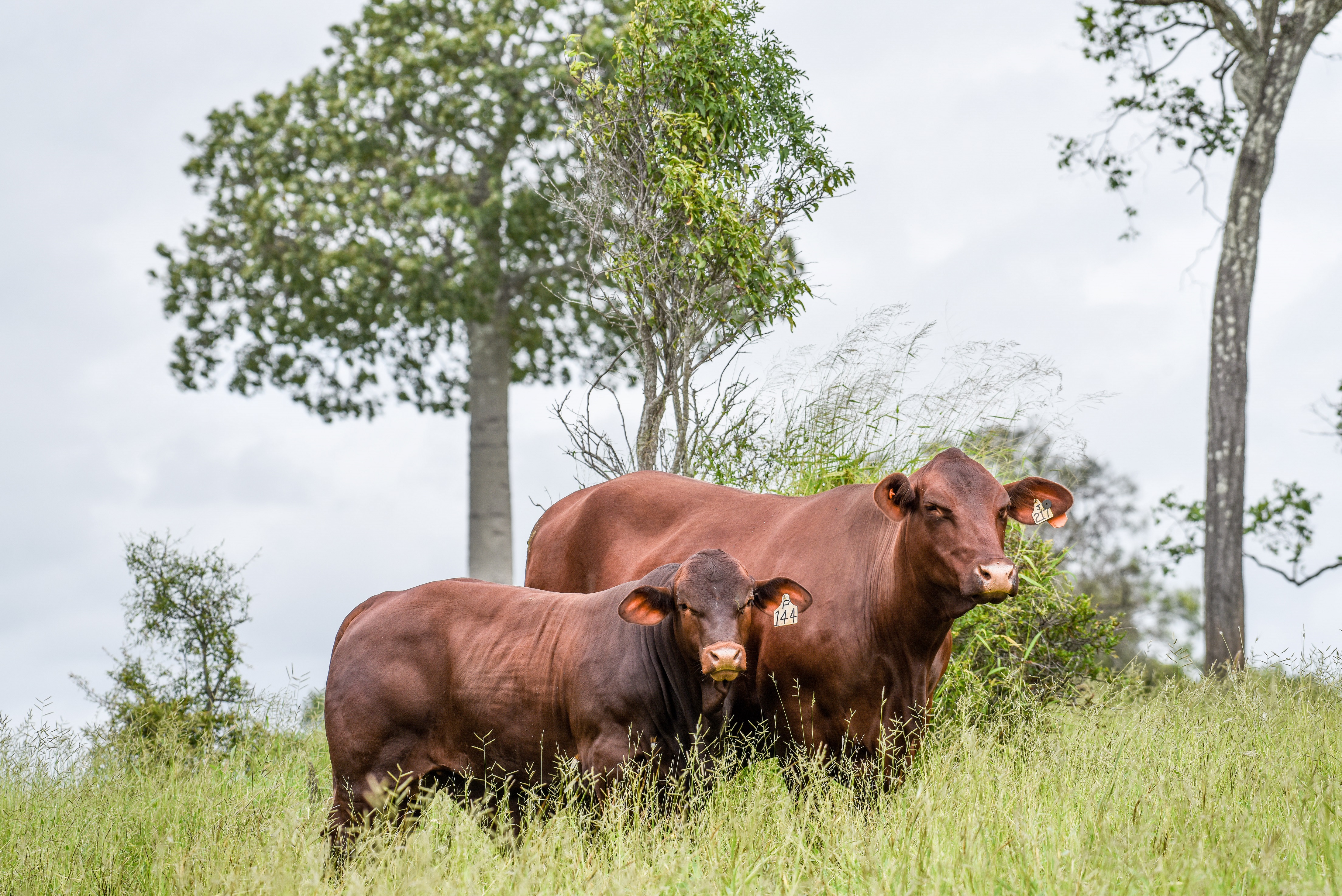Bringing Back the Late Calver
Late calving females can be a major source of reproductive wastage in Australian beef herds, contributing to economic losses, lower weaning weights and heifers unable to reach mating weights. The 365 day reproduction cycle relies on a cow calving, reproductive tract involution, return to oestrus and conception within 84 days. Coupled with this, within a progressive, profitable cow herd, calves fall in a concentrated calving distribution, aligned with a seasonal pasture availability and prioritizing farm labour resources to breeder management.
Minimising the time from calving to resumption of oestrus and maximising the opportunity to conceive is the key to advancing the conceptions of late calvers and bringing them back into season with the rest of the cow herd.
- Selection pressure for fertility is a must; reducing the incidence of the cows drifting out of season. Select cows capable of conceiving within two mating cycles and bringing a live weaner every year.
- Energy availability greater than requirements for all other physiological requirements is the main driver for return to oestrus.
- Relative to the dry cow
- a lactating cow requires 1.5 x energy1 for maintenance
- a growing, lactating first calf heifer requires 2.2 x energy for maintenance.
- The most economic way to maximise energy availability during this time is to calve cows in body condition score (BCS) 3.5 (1= too thin; 5=obese), they have body reserves for use when there is a deficit in provision of energy.
- When BCS may appear inadequate, if high quality feed is on offer – over and above that required for growth and maintenance – adequate energy can be redirected to the reproductive process.
- Relative to the dry cow
- Early post calving hormone treatment has been shown to advance conception date. Late calvers can be selected for an AI program to commence synchronisation as early as 14 days post calving2 followed by exposure to a cover bull for two cycles. This method will not necessarily maximise conceptions to the AI round, however owing to early hormone treatment and oestrous synchronisation, will maximise conceptions earlier in the joining period. Treated cows will result in an earlier average conception date compared with an untreated mob. A twelve-week pregnancy test using ultrasound can diagnose conceptions to the AI round, 9 week pregnancies to the first cycle with the bull and 6 week pregnancies to the second cycle with the bull. Management of the late calvers with this program offers control to the producer, aids in nutritional management from calving to joining of this group and gives choice for retention or cull at the preg test muster.
- In order to maximise conceptions, frozen semen must be good quality and bulls must be fertile and in working order. There is no time for lost opportunities for conceptions. Ultrasound scanning and measurement of follicles at AI can provide valuable information on every cow, giving choice around what value semen to use and whether to AI at all, serving to reduce semen wastage.
- Health events at calving including dystocia’s, infections, inflammation, metabolic disorders and acute nutritional disorders must be diagnosed early and managed well. Management of genetic selection, heifer growth prior to joining and during gestation, sound breeder nutrition will reduce the incidence of these events. Cows falling into this group will be difficult to advance conception date, and may require culling from the herd.
Return to oestrus of late calvers is the key to early conceptions, tightening calving distribution and driving weaner weights in a beef production system. Late calvers fail to join and drop out of the system, late calves have fewer growing days to weaning, lighter weights at weaning and heifers have less days to reach mating weight. Good management and identifying opportunities to avoid the late calver or to advance the conception date will maintain a 365 day reproductive cycle and allow a concentrated calving distribution.
For more information on this topic or any other repro questions, call the Repro360 Helpline on 1300 163 056 or visit repro360.com.au
--------------------------------------------------------------------------------------------------------------------------------------------------------------------------------------------------------------------------------
1MLA – More Beef from Pastures
2Jasmin Hyatt -The effect of Early Postpartum Intervention on the Reproductive Performance of Anovulatory Anestrus in New Zealand Dairy Cows.


